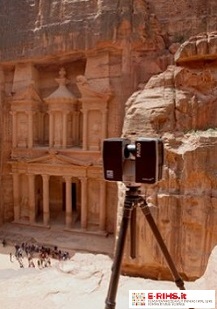
LABORATORY: CNR ISPC
NAME OF THE INSTRUMENT
Time of Flight laser scanner (TOF), phase-based laser scanner.
GENERAL DESCRIPTION
The CNR ISPC laboratories have a strong know-how in survey methodologies and techniques integrating image-based e range-based solutions aimed at surveying Cultural Heritage, documentation, and scientific visualization. The laboratories are equipped with instrumentation and active and passive sensors for the 2D and 3D digitization of monuments and archaeological sites. The institute's instrumentation mainly consists of terrestrial and aerial photogrammetric systems (high-resolution photographic cameras and several lenses, UAS), laser scanning systems (TOF and phase-based), topographic systems such as the differential GPS, for the positioning of points on the territory, intended both as points of fixed stations for the constitution of polygonal, and points for the determination of the shape of the territory, which can be loaded directly on the most common GIS platforms (QGIS), and total station. In the context of a 3D survey project, CNR ISPC can offer its scientific collaboration for the planning, survey, processing, interpretation, and visualization of the surveyed data.
TECHNICAL DESCRIPTION
The laser scanner bases its operating principle on polar surveying; the ability to acquire millions of points in space makes the laser scanner an instrument capable of surveying everything visible in a wide range. As part of the ranging scanner, the CNR ISPC is equipped with Time-of-Flight (TOF) and Phase-Based instruments. In the former, the distance between the transmitter and the reflecting surface is calculated on the time taken by the signal between emission and reception. The latter use the phase comparison method. The result is a point cloud which, properly processed and integrated with other techniques, can give back important information in the interpretation and communication of the results of the investigated subject.
Referents:
Daniele Ferdani daniele.ferdani@cnr.it
Andrea Angelini andrea.angelini@cnr.it
